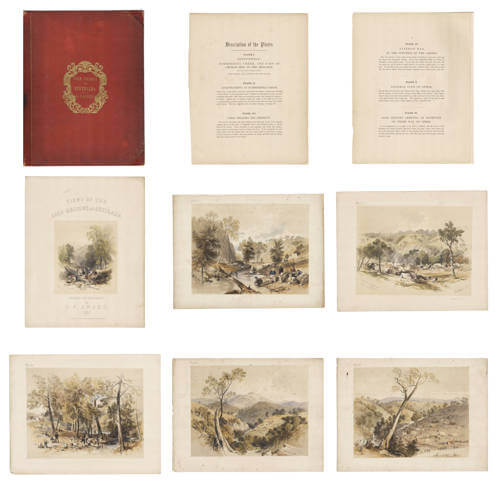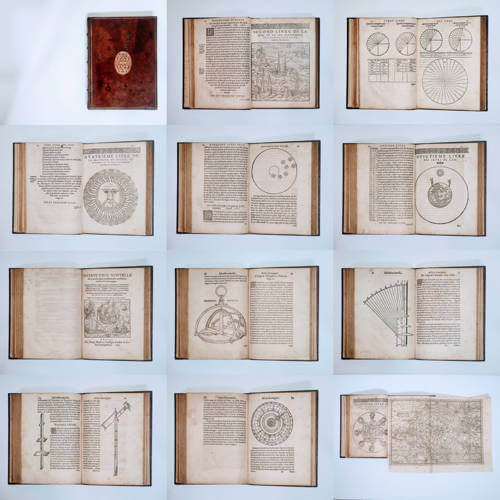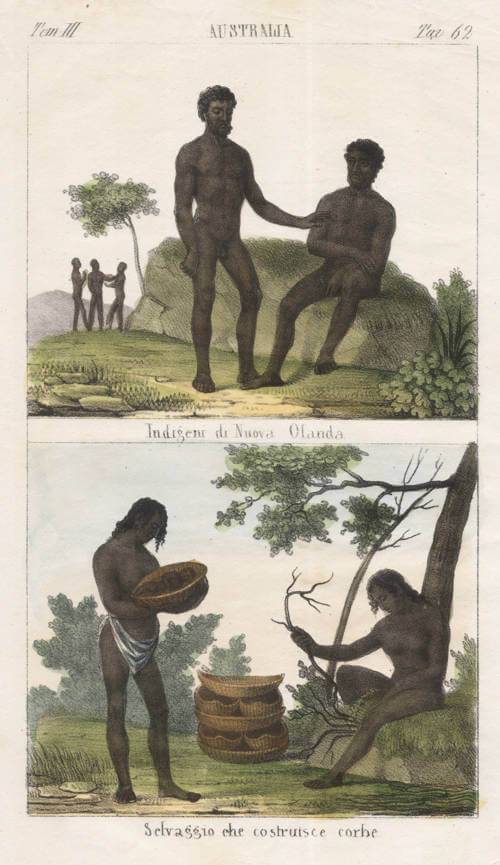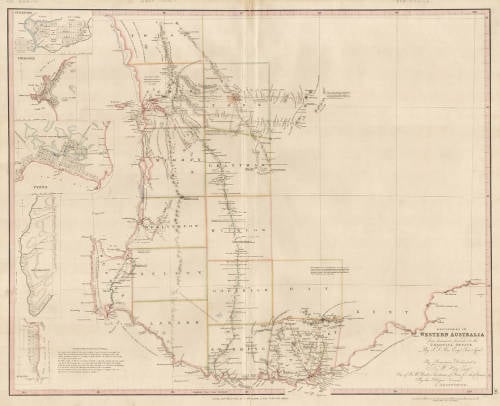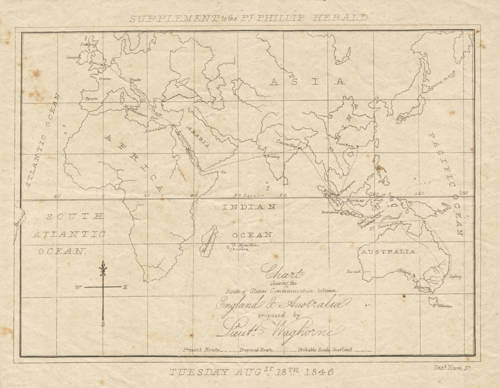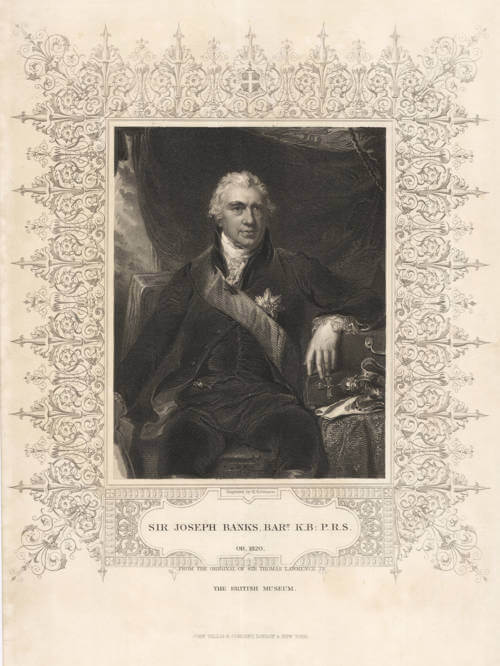Leen Helmink Antique Maps
the unobtainable first Australia gold rush by George French Angas
The item below has been sold, but if you enter your email address we will notify you in case we have another example that is not yet listed or as soon as we receive another example.
Stock number: 19693
Zoom ImageCartographer(s)
George French Angas (biography)
Title
Views of the Gold Regions of Australia
First Published
London, 1851
Size
37.4 x 48.2 cms
Technique
Condition
excellent
Price
This Item is Sold
Description
* the publisher's copy, annotated in pencil
* the plates that were the colour samples for later copies
* likely coloured by the artist George Angas himself
* including the blank protective sheets to protect the lithos
George Angas' beautiful set of lithographs of the first Australian gold rush, in original red cloth, from the London edition that was published simultaneously with the Sydney edition, but from different lithograph stones that Angas had shipped to London. Both the London and Sydney editions are of utmost rarity, painfully more so as complete sets in the original binding. Angas complained that the stones for the Sydney edition were completely worn out and useless after 200 prints, the situation will not have been different for this London edition.
The set here is the London publisher's copy, used as colour examples for the hand colouring artists of the book, as evidenced by the manuscript annotations and the pushpin holes used to attach them to the wall.
Introduction
When gold was discovered in Australia in the 1850s, it brought gold-seekers from around the world to the colonies. The first big discoveries of gold were at Ophir in New South Wales, and then at Ballarat and Bendigo Creek in Victoria. The gold rushes led to a bigger population and economy, as well as new ideas about how Australia should be organised and governed.
George French Angas (1822–1886), an English artist, naturalist, and lithographer, is renowned for his vivid depictions of colonial landscapes, peoples, and cultures in Australia, New Zealand, and South Africa during the mid-19th century. His works, characterized by meticulous detail and vibrant hand-colored lithographs, serve as both artistic achievements and historical documents. In 1851, Angas published two significant works capturing the fervor of Australia’s first gold rush at Ophir, near Bathurst, New South Wales: Views of the Gold Regions of Australia, published in London by J. Hogarth, and Six Views of the Gold Field of Ophir, at Summerhill and Lewis Ponds Creeks, published in Sydney by Woolcott and Clarke. Both works, released simultaneously, contain six lithographic plates drawn from nature and on stone by Angas himself. These publications provide a visual chronicle of the early gold rush, offering insights into the landscape, mining techniques, and social dynamics of the period. This description explores the context, content, artistic significance, and historical value of these twin publications, which stand as some of the earliest and most detailed visual records of Australia’s goldfields.
The accompanying descriptive notes, retained in both editions, provide context for each scene, detailing the mining processes, geological features, and social dynamics observed by Angas. These texts enhance the lithographs’ value as ethnographic and historical records, offering contemporary readers a vivid account of the gold rush’s early days.
Historical Context
The Australian gold rush began in May 1851, following Edward Hammond Hargraves’s announcement of payable gold at Ophir, a site near Orange, New South Wales. Hargraves, having learned prospecting techniques during the California Gold Rush, sparked a transformative event that drew thousands of diggers to the region, quadrupling Australia’s population between 1851 and 1871. The discovery at Ophir, officially recognized on May 14, 1851, led to an influx of prospectors, with an estimated 300 diggers present by mid-May and hundreds more by the end of the month. This rapid migration disrupted labor markets, as workers abandoned their posts in Sydney to seek fortunes in the goldfields, prompting both excitement and concern among colonial authorities.
Angas, already an established artist known for works like South Australia Illustrated (1847) and The New Zealanders Illustrated (1847), was in Sydney when news of the gold discovery broke. Driven by his passion for documenting colonial life and natural history, he traveled on foot to Ophir to capture the unfolding scenes. His resulting lithographs, published just three months later on July 19, 1851, reflect the immediacy of his response and the urgency of recording this pivotal moment. The simultaneous publication in Sydney and London underscores the global interest in Australia’s gold rush, as well as Angas’s ability to cater to both colonial and metropolitan audiences.
Content and Structure
Both Views of the Gold Regions of Australia (London) and Six Views of the Gold Field of Ophir (Sydney) consist of six hand-colored lithographic plates, each accompanied by descriptive text. The Sydney edition, published by Woolcott and Clarke, is a folio measuring approximately 36 x 45 cm, with plates titled as follows: 1) Gold-washing, Summer Hill, 2) Ophir Diggings, 3) Fitzroy Bar, Ophir, 4) Ophir at the Junction, 5) Bathurst, and 6) Ophir. The London edition, published by J. Hogarth, is similarly formatted, though with minor variations in plate titles or presentation, such as the misspelling of Angas’s name as “Angus” on the title page. The lithographs, drawn directly on stone by Angas, depict scenes of gold mining, prospectors, and the surrounding landscape, capturing the rugged beauty and frenetic activity of the Ophir goldfields.
The accompanying descriptive notes, retained in both editions, provide context for each scene, detailing the mining processes, geological features, and social dynamics observed by Angas. These texts enhance the lithographs’ value as ethnographic and historical records, offering contemporary readers a vivid account of the gold rush’s early days.
Artistic and Technical Significance
Angas’s lithographs are notable for their technical precision and artistic quality. Trained under natural history painter Benjamin Waterhouse Hawkins, Angas mastered lithography, a relatively new printing technique that allowed for detailed and reproducible images. His “drawn on the spot” approach, as described by historian John Tregenza, involved sketching directly in the field, ensuring authenticity and immediacy. The hand-colored lithographs, produced with tint stones and meticulous coloring, achieve a vibrant realism that brings the goldfields to life. The Sydney Morning Herald praised the Gold-washing, Summer Hill plate for conveying “more and better information of the diggings and the modus operandi, at a glance, than could be conveyed by a volume of letter-press description.”
The lithographs balance artistic composition with documentary intent. Angas’s use of perspective, as seen in Ophir at the Junction, frames the human activity within the grandeur of the Australian landscape, with lofty mountains and swamp oaks providing a dramatic backdrop. His attention to detail—capturing the texture of quartz rocks, the design of mining cradles, and the attire of diggers—reflects his naturalist’s eye and commitment to ethnographic accuracy. The hand-tinting, applied with care, enhances the visual impact, making the lithographs appealing to both scientific and aesthetic audiences.
Historical and Cultural Value
The Views of the Gold Regions of Australia and Six Views of the Gold Field of Ophir are among the earliest visual records of Australia’s gold rush, predating many other artistic depictions. Published just three months after the Ophir discovery, they capture the goldfields in their nascent state, before the environmental degradation caused by tens of thousands of diggers. The lithographs document the introduction of Californian mining techniques, such as the cradle, which revolutionized gold extraction and fueled the rush’s intensity. They also highlight the social composition of the goldfields, showing a diverse array of prospectors, though non-European miners, such as the Chinese, are notably absent, reflecting the era’s racial dynamics.
As historical documents, the lithographs provide insights into the environmental and social transformations wrought by the gold rush. The pristine bushland depicted in Gold-washing, Summer Hill contrasts with later accounts of erosion and river pollution, underscoring the ecological cost of mining. The images also capture the mateship and collective spirit among diggers, which contributed to Australia’s emerging national identity. Angas’s work, exhibited at the 1855 Paris Exposition Universelle alongside other Australian artists, helped promote Australia as a land of opportunity, encouraging migration and investment.
Challenges and Legacy
Despite their significance, Angas faced challenges with these publications. The London edition, Views of the Gold Regions of Australia, reportedly left Angas unpaid, possibly due to difficulties with his agent or publisher. Some sources suggest that certain plates, particularly those depicting Victorian goldfields, may have been based on photographs by W.F. Bentley, raising questions about the extent of Angas’s direct involvement in those scenes. Nevertheless, the Ophir lithographs are undisputedly his, drawn from firsthand observation and widely praised for their fidelity.
The lithographs remain a testament to Angas’s skill as an artist and his role as a chronicler of colonial Australia, offering a window into a transformative moment in the nation’s history.
Conclusion
George French Angas’s Views of the Gold Regions of Australia (London, 1851) and Six Views of the Gold Field of Ophir (Sydney, 1851) are landmark works that capture the excitement, labor, and landscapes of Australia’s first gold rush. Through six meticulously crafted, hand-colored lithographs, Angas documents the Ophir goldfields with artistic flair and historical precision. These publications, released simultaneously to cater to colonial and international audiences, reflect the global fascination with Australia’s gold discoveries and Angas’s dedication to recording colonial life. As both art and history, the lithographs endure as vivid records of a pivotal era, showcasing the interplay of human ambition and natural beauty in the early gold rush. Their legacy lies in their ability to transport viewers to the rugged creeks and bustling diggings of 1851, preserving a fleeting moment of Australia’s past for generations to come.
The first views of the Australian Gold Fields
Very scarce, the rare, attractive and highly desirable London version of the 'first folio of goldfields views published in Australia' (Australian Rare Books). This set of six views was the only significant graphic record of the New South Wales goldfields that was to appear.
Ophir, near Bathurst, was the scene of the first major gold rush in Australia. George French Angas was in New South Wales when news of large discoveries of gold arrived: his views of the hectic activity on the new goldfields are the first visual record of the beginnings of the Australian gold rushes. 'These lithographs are among his most successful artistic productions; carefully composed and delicately, but firmly, executed, making expert use of the technical possibilities of the lithographic process to produce a very pleasing pencil like texture, with subtle highlights in the buff-coloured background…' (John Tregenza, George French Angas).
Roger Butler in his recently published Printed Images in Colonial Australia underlines the significance of Angas' work: he notes that Angas had studied lithography in England with Benjamin Waterhouse Hawkins, a natural history artist, and quickly proved to be adept at the technique. He first arrived in Australia in 1843, touring, sketching, and exhibiting his work in Adelaide and Sydney. He returned to London in 1846 and staged a successful show before publishing his famous South Australia Illustrated (see following item).
Back in New South Wales when news of the discovery of gold reached Sydney, Angas immediately 'joined one of the first parties that proceeded to the Ophir diggings … crossing the Blue Mountains on foot, and sleeping under a dray at night, in the depth of winter'. Angas, Butler continues, published the first of the resulting images in Sydney on 19 July 1851. The fresh and lively depictions of life on the goldfields were well-received, and a contemporary review praised their fidelity, calling them 'immeasurably superior to any colonial lithographs we have ever seen'. The entire set became available with the letterpress description as offered here, in October of the same year.
Although exact numbers are not known, the original issue of this work must have been very small. Angas himself wrote to his London publisher with the comment that he could only get around three or four hundred pulls from a stone before it deteriorated in the tough Australian conditions: given that many of the lithographs were purchased separately, it is little wonder that this complete suite of images is now so rare. A London edition followed, with plates newly executed from original sketches Angas forwarded to his publisher.
Bibliography
Abbey Travel in Aquatint and Lithography 1770-1860, 582; Australian Rare Books, 239;
Butler, Printed Images in Colonial Australia 1801-1901, 148, 150; Ferguson, 5996.
(Hordern House).
Six Views of the Gold Field of Ophir
The first illustrated book to record the beginning of the Australian gold rush. On 29 April, 1850, on the prompting of Edmund Hammond Hargraves, the Sydney Morning Herald reported the discovery of gold near Bathurst in a brief announcement. Shortly after Hargraves had announced the discovery of gold at Ophir, Angas hastened from Sydney to Bathurst. He was the first artist to arrive on the goldfield, and Six Views is not only the first pictorial record of the beginning of the Australian gold rushes, it is in fact the only substantial visual record of the relatively short-lived New South Wales goldfields ever to have been published. The lithographs are considered to be among Angas's most satisfying work. Drawn on the stone by Angas himself, the plates show him, with his expert handling of the lithographic medium, at the peak of his artistic achievement: they are among his most successful artistic productions; carefully composed and delicately, but firmly, executed, making expert use of the technical possibilities of the lithographic process to produce a very pleasing pencil like texture, with subtle highlights in the buff-coloured background (Tregenza).
Ferguson, 5996; Wantrup, 239.
(Mossgreen auctions)
Sydney Morning Herald, 1 September 1851
Review of colour lithographs by George French Angas for his Six Views of the Gold Field at Ophir.
ANGAS’ VIEWS or THE GOLD FIELD OF OPHIR. -This work being a series of six views of the Gold Field of Ophir or Summerhill, and Lewis' Ponds Creeks, drawn from nature, and on stone, by Mr. G. F. Angas, has at length been published by Messrs. Woolcott and Clarke, of George-street-and we have had leisure to examine the work as a whole. We have not been deceived in the favourable impression we formed of the work from the first sketch of the series which we formerly noticed. The work comes up to the sample-and is not unworthy the author of "The Kafirs," "The New Zealanders," South Australia," &c, taking into consideration the difficulties connected with lithographic printing in Sydney. Indeed, considering these difficulties, and the many attempts which have hitherto been made to produce specimens of lithographs in chalk, in this colony, the work before us reflects the highest credit on the printer, who has no doubt been tutored in the art by the artist himself. The clearness of line in the sharper touches, and the freedom from rottenness in the lighter and more distant parts, exhibited in the copy now before us, are admirable - far exceeding anything we have seen issue from a Sydney lithographic press; nor do we think Mr. Angas' work would disgrace some of the best lithographic establishments in the mother country. The sketches themselves are spirited, characteristic, and artistical. The drawing and grouping of the figures are excellent on the whole; the different portions of the landscape are thrown in with a free and vigorous pencil; and though we cannot offer an opinion of the copy being true to the original, as we have never had the felicity to visit the Field of Gold ; still it is not unreasonable to suppose that sketches of such talent should be faithful re- presentations of the scenes depicted. There are thousands, however, better able to speak on this subject than ourselves.
The first of the scenes-Gold - washing at Summerhill Creek is one of our favourites. The view is taken from a point about half a mile below the junction of the Summerhill and the Lewis Ponds Creeks. A picturesque bend of the creek is represented wending its way through a gorge between two ranges of lofty mountains, clothed with trees chiefly of the swamp oak species; a party of diggers occupy the foreground, and exhibit, in a very graphic manner, the excavation of the earth, bringing it in buckets to be washed, the rocking of the cradle, and the washing of the residue in a tin dish or prospecting pan. Different parties of diggers are scattered along the creek as far as the eye can reach. This sketch gives a stranger to Ophir more and better information of the diggings and the modis operandi, at a glance, than could be conveyed by a volume of letter-press description.
The second sketch-An Encampment of Gold Diggers -changes the scene from the bustle of busy labour to the stillness and solitude of the tented field. Tents and gunyahs, and temporary stores are scattered about in profusion, and some native women of the Lachlan tribe (we wish they were a little taller or the tree beyond them a little shorter) give variety and local truth to the foreground. The third of the scenes- The Fitz Roy bar- at the junction of the two creeks, is a classic spot, for it was here that the digging for Australian gold commenced. It is similar in character to the first view, but presents greater liveliness and more variety in the employments of the diggers. The trees are well managed on the whole, though the foliage in some cases appears too much detached from the stems, as if it grew all on one side, and "dwelt apart."
In the fourth sketch, a General View of Ophir, there is some clever drawing, but we do not like it so well as the preceding views. It is evidently a bird's-eye prospect, and the horizon is accordingly high; but, if our eye deceives us not, the height of the point of station is not sufficient to account for the extraordinary appearance of the creek. We are aware of the difficulty with which an artist has to grapple in representing a scene far beneath the spot where he stands; but we think the eye would have been better pleased, and the deception - for it is a deception - better preserved, if some large figures had been introduced in the foreground on the left, which would have given distance to the figures in the foreground to the right, rescued them from their present appearance of a race of pigmies, and given a better keeping to the whole scene.
The fifth new represents the Gold Diggers arriving at ' Bathurst on their way to Ophir, and is remarkable chiefly as giving us a slight taste of sketches on the road, and a glance at the town of Bathurst, which has become famous in these days of "nuggets" and gold by the hundred-weight.
The last scene of all is a representation of Summer Hill Creek and part of Church Hill in the distance, taken from Mr. Lane's property above the junction. This sketch calls for no remarks beyond those already offered. It is similar in character to number four. It is cleverly sketched. The lines of the hills on both sides of the creek are, perhaps, rather equally balanced, - owing, no doubt, partly to the nature of the ground, but partly, also we think, to the station which the artist selected. -
On the whole we are highly pleased with the work. It reflects credit alike on the artist, the printer, and the publishers; who, we trust, will all reap some of the treasure, the locality of which, and the mode of finding it, they have combined to portray. It is no mean praise when we say that the work will not detract from the fame of Mr. Angas. And we trust the colonists will not merely extend their patronage to the arts in this instance by furnishing themselves with copies of a work-illustrative of an event in the colony's history-the results of which are likely to exceed our most sanguine hopes; but that they will for the honour and benefit of the colony, send to their friends in the mother country so graphic a picture of that talismanic creek, and those romantic mountains, which must soon give a world-wide I reputation to the land in which we live, and, by a special interposition of Providence, people the boundless wilds of this noble colony, without cost to our exchequer, with a countless number of freemen of the ' staunch Anglo-Saxon race.
[Sydney Morning Herald, 1 September 1851, p.1, col.5.]
Rarity
Both the London and Sydney editions are of utmost rarity, painfully more so as complete sets in the original binding. Angas complained that the stones for the Sydney edition were completely worn out and useless after 200 prints, the situation will not have been different for the London edition.
Provenance
* the publisher's copy, annotated in pencil
* the plates that were the colour samples for later copies
* likely coloured by the artist George Angas himself
* including the blank protective sheets to protect the lithos
* Ex Collection Geoffrey Allan Edwards
* Ex Christie's Auction 9226, London 2001
Significance
George French Angas’s Views of the Gold Regions of Australia (London, 1851) and Six Views of the Gold Field of Ophir (Sydney, 1851) are landmark works that capture the excitement, labor, and landscapes of Australia’s first gold rush. Through six meticulously crafted, hand-colored lithographs, Angas documents the Ophir goldfields with artistic flair and historical precision. These publications, released simultaneously to cater to colonial and international audiences, reflect the global fascination with Australia’s gold discoveries and Angas’s dedication to recording colonial life. As both art and history, the lithographs endure as vivid records of a pivotal era, showcasing the interplay of human ambition and natural beauty in the early gold rush. Their legacy lies in their ability to transport viewers to the rugged creeks and bustling diggings of 1851, preserving a fleeting moment of Australia’s past for generations to come.
Condition description
Complete set, in the original red cloth. Fresh impressions of the lithos. Including the original protective blank sheets for the lithos. Minor spotting of the paper as usual. A highly desirable copy.
George French Angas (1822-1886)
George French Angas (1822-1886), naturalist and painter, was born on 25 April 1822 at Newcastle upon Tyne, England, fourth child and eldest son of George Fife Angas and his wife Rosetta, née French. He was educated in Essex and at Tavistock Grammar School; he early showed an interest in natural history and art, but his father put him into an office in London. After about a year there he studied for a time under Waterhouse Hawkins, a natural history artist. Angas toured the Mediterranean from August to November 1841 and published A Ramble in Malta and Sicily in the Autumn of 1841 (London, 1842), which he illustrated with lithographs drawn by him on the stone.
He sailed for Australia in 1843 in the Augustus, reached Adelaide in January 1844, and remained in South Australia until July when he left for New Zealand. He returned to South Australia in January 1845 and remained for six months. During these visits to South Australia Angas went with William Giles to the area in the vicinity of the mouth of the River Murray, and with Governor (Sir) George Grey to the south-east of the province, Kangaroo Island and Port Lincoln. These journeys Angas recorded in water-colour drawings which were shown in Adelaide in June 1845 in the Legislative Council chamber.
In July 1845 Angas reached Sydney where he held an exhibition of paintings; a purpose of this exhibition, and of one in April 1847 after his return to London, was to solicit subscriptions for his two folio volumes published in 1847. After a tour of New South Wales he sailed for England in September 1845 and reached Gravesend in February 1846. The voyage was by Cape Horn, and when the ship was delayed at Rio de Janeiro, Angas made a number of drawings; that he intended these to form part of a book to be called 'The Scenery of Rio Janeiro' is clear from a number of water-colour drawings which survive, but the book was never issued. In 1847 three of his most important works were published in London: South Australia Illustrated and The New Zealanders Illustrated, both large folios which appeared in parts; and Savage Life and Scenes in Australia and New Zealand, in two volumes. South Australia Illustrated contains 60 lithographed plates, hand-coloured, all after water-colour drawings by Angas except two or perhaps three which are after Samuel Thomas Gill. In this book, as in the other two large folios after his drawings, some of the lithography was done by Angas himself. The subjects depicted are scenery, Aboriginals, insects, butterflies, flowers and native weapons and dwellings; the text is by Angas. Savage Life and Scenes in Australia and New Zealand is illustrated with uncoloured lithographs after Angas's drawings and contains Angas's account of the travels of which the two folios were the fruit.
He next travelled in South Africa, and in 1849 published in London the third of his large folios of hand-coloured lithographs, The Kafirs Illustrated; the text, including a short biographical introduction, is again by Angas himself. In the same year Description of the Barossa Range also appeared in London, the text being by 'Agricola', who was probably John Howard Angas, his younger brother; this is illustrated with six hand-coloured lithographed plates drawn 'from nature and on stone' by George French Angas. He was appointed naturalist to the Turko-Persian Boundary Commission, but he caught a fever in Turkey and was invalided back to England. In 1849 he married Alicia Mary Moran, who in 1850 accompanied him to Australia. There were four daughters of the marriage. He went from South Australia to the gold diggings near Bathurst and in 1851 published Six Views of the Gold Field of Ophir (Sydney) and Views of the Gold Regions of Australia (London) lithographs drawn by Angas on the stone. In 1853 Angas was appointed secretary to the Australian Museum in Sydney, a position which he held until 1860. Whilst there he supervised the work of classifying and arranging the first public collection of Australian specimens, especially shells. He returned to South Australia in March 1860, and was chairman of the district council of Angaston in 1860-62. He left with his family for England in February 1863. He lived in London until his death there on 4 October 1886, except that ill health compelled him to spend winters abroad. He was a member of the Zoological Society and of the Linnean Society, and contributed many papers to the Proceedings of the Zoological Society between 1863 and 1886; most of these deal with Australian shells.
Angas was essentially a naturalist who at the same time was a gifted draftsman, and his interest in ethnology, conchology and many forms of natural history is apparent in much of his work. In his Australian landscapes he took care to depict native vegetation accurately. His first book was written before he was 21 and many were published before he was 28. In later life he devoted himself more to natural history than to art. Wood engravings after Angas's drawings illustrate the journals of John McDouall Stuart, published in 1864, and the travels of (Sir) John Forrest, published in 1875. His last published Australian landscapes appear in a supplement to Colonies and India, 7 July 1877, concerning the River Murray, written by Angas and illustrated by small sketches including many views of the river. Angas also published Australia, a Popular Account (London, 1865) and Polynesia, a Popular Description (London, 1866). His Wreck of the 'Admella' and Other Poems (London, 1874) has little merit. Pomara, a Tale of Real Life perhaps appeared about 1848 but no copy has been traced. Of his many papers contributed to scientific journals, an indexed chronological list of those on conchology appears in the Australian Zoologist, February 1959.
Many of the water-colour drawings from which the lithographs in South Australia Illustrated were made are in the National Gallery of South Australia and in the South Australian Museum. The Rio de Janeiro water-colour drawings are in the library of the Royal Geographical Society of Australasia (South Australian branch). A lithograph of a self-portrait is the frontispiece to Kafirs Illustrated.
Select Bibliography
B. D. Ryder, The Sons of Aeneas (priv print, no date)
B. Smith, European Vision and the South Pacific (Oxford, 1960)
Little Journal (London), vol 1, no 3, 1884
W. H. Langham, ‘George French Angas (1822-1886): An Imperial Artist’, Bulletin of the National Gallery of South Australia, vol 3, no 2, Dec 1941, pp 2-4.
(E.J.R. Morgan - Australian Dictionary of Biography).
Related Categories
Related Items
